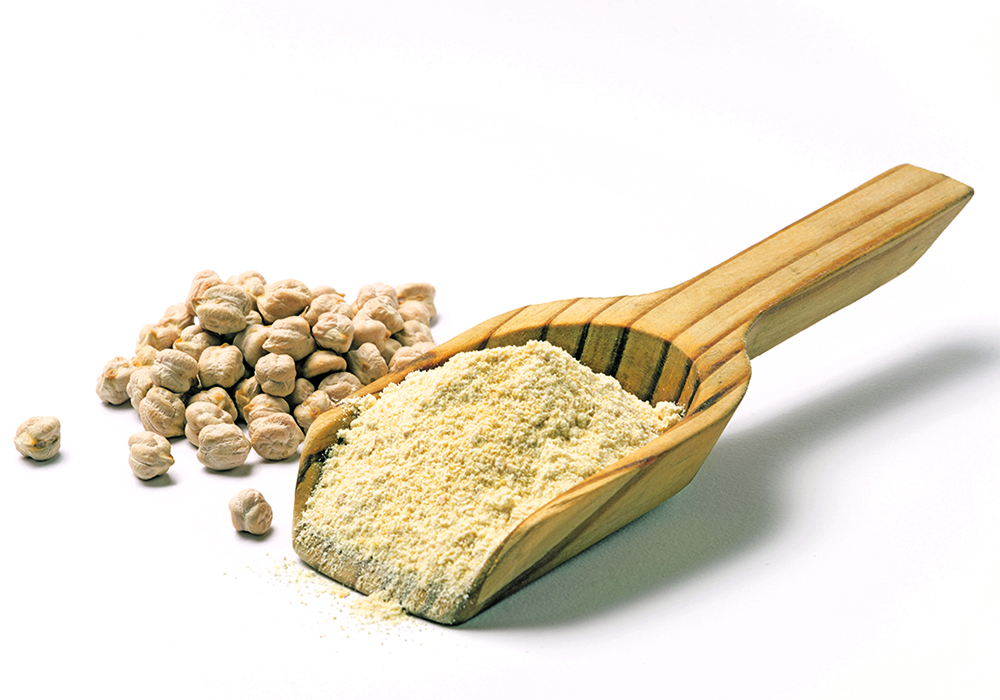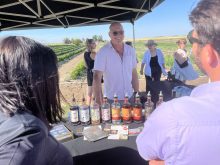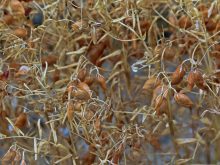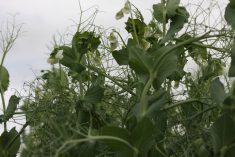Industry official wonders if the expansion of pulse processing that has been seen in Western Canada is outpacing demand
WINNIPEG — Every year, food companies in the United States, the United Kingdom, Europe and Asia launch thousands of new products.
Peas, lentils, pea protein and chickpea flour made from pulse crops grown in Western Canada are becoming common ingredients in those novel foods.
In 2023, for instance, more than 1,200 products from around the world had chickpea flour on the ingredients label.
Read Also

Canola oil transloading facility opens
DP World just opened its new canola oil transload facility at the Port of Vancouver. It can ship one million tonnes of the commodity per year.
That’s great news for Canadian farmers and Prairie companies that are milling and processing pulse crops into flour and protein concentrates.
However, a representative of Warburtons, the largest bakery in the United Kingdom, is wondering if the expansion of pulse processing in Western Canada is outpacing the demand.
“I get approached weekly, and Warburtons gets approached weekly, by some company or start-up that is splitting, milling or doing something (with pulses),” said Adam Dyck, program manager with Warburtons Canada
“The amount of times I get asked … to try a product, it’s pretty crazy. There are outfits (companies) I’ve never heard of before, popping up across Western Canada…. A lot of them are very small.”
Dyck made his comments at the Pulse & Special Crops Convention, held in downtown Winnipeg Sept. 17-19. He was part of a panel discussion at the conference that looked at the state of processing and value-added in the industry.
Overall, the news is positive.
Data shows that pulses are being used to make snack foods, ready-to-eat meals, pet food, bakery items, pasta, milk and many other products.

Over the last few years, the market for plant-based food hasn’t grown as quickly as expected, but the use of pulses in food is increasing, said Tanya Der, director of diversification and market insights with Pulse Canada.
“Despite market slowdown, pulse ingredient innovation is continuing to rise,” Der said.
“Peas and chickpea ingredients are tracking (higher)…. In just this last year, 2023, we saw over 2,000 new (food) products with pea protein.”
Looking at future growth, Dyck sees a fit for pulses in the bread and bakery sector.
“Where I see the massive opportunity is not necessarily … new high protein products on the shelf but including a base level of pulse flours in products,” he said.
“If you add five to 10 percent of pulse flours in all our (bakery) products to increase the general nutrition value … it could have a huge (impact) on our nutritional (profile), and demand as well.”
However, chickpea flour may be a better fit than pea flour in the bakery business.
Chickpeas have a neutral flavour and more protein than peas and consumers are familiar with them, thanks to foods such as hummus.
Peas are better suited for protein isolates or pea fibre but not flour, Dyck said.
“As pea flour, that’s where you get a lot of the flavour (issues),” he said.
“We had a massive project with Saskatchewan Pulse Growers and Manitoba Pulse Growers. We looked at this over three years. We basically came to the conclusion that peas don’t work in our process … they don’t work as a flour.”
The federal government has made the pulse industry and plant-based food a priority, investing hundreds of millions of dollars into the Protein Industry Supercluster.
Canada is a world leader in this sector, but other countries and companies are also investing in pulse processing.
So, a small-scale processor on the Prairies that wants to sell pulse ingredients into the food industry must compete with firms such as India, Europe and China.
“I hope the trend continues and there’s a massive increase of putting pulse flours, fractions and bits into all kinds of (food) products,” Dyck said.
“(But) there needs to be demand for all of this increased capacity. We’re not the only country that’s increasing capacity.”
















